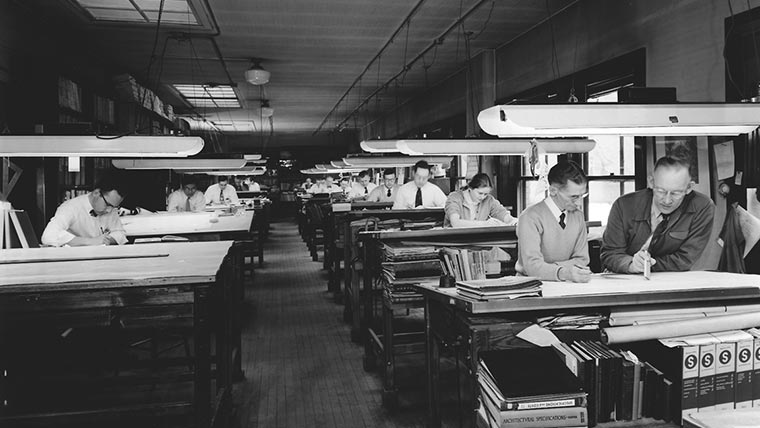Technology has changed so much in the past few decades, and the AEC industry is no exception. While certain things definitely become easier as technology progresses, these huge shifts are not without growing pains. However, often with time we come to see that the work of changing is ultimately worth it. The history of how technical drawing has advanced in the engineering industry is a key example of this.
There was a time when technical drawings were created “on the board.” Pencil or pen and ink on paper, mylar, or vellum. Line work, notes, callouts, and dimensions were produced “by hand.” By the time things started to shift, many of us had spent a decade or more producing drawings in this way.
By the mid-1980s, CADD, or Computer Aided Drafting and Design, was becoming commonplace in the larger companies. The transition for most drafters was not an easy one. There was no IT department, no internet, and very little training available. The immediate impact was that drafters no longer had the time to learn design and more advanced engineering skills. Learning the software, configuring operating systems, and implementing computer hardware installs were time and labor intensive.
This transitional period did not last forever. In time, CADD became a faster, easier way to produce drawings. New engineers started learning CADD as part of their college curriculum and were beginning to draw for themselves. Drafters became computer technicians, CADD managers, and Engineering Technicians.
This has led to an environment where changes are made faster, with more precision than ever before. Now, we are no longer confined to 2D, or flat models; we’ve expanded to produce 3D models, BIM, and a whole host of real-world smart software. The only thing expanding faster than our new technologies are the possible uses to which they can be put.
The abundance of this software, along with the technicians and engineers who use it, has led to a whole new discipline: quality control. By enhancing speed and accuracy, CADD has allowed for a whole new level of quality control—and has quickly become the key to a successful project. More and more, quality control keeps our projects on budget, construction costs down, and clients returning.
The advent of CADD has taught me the value of adopting—and adapting to—new technologies, even when it’s difficult. The end results are often well worth the effort, and I look forward to seeing what’s next for our industry. Happy CADDing!



